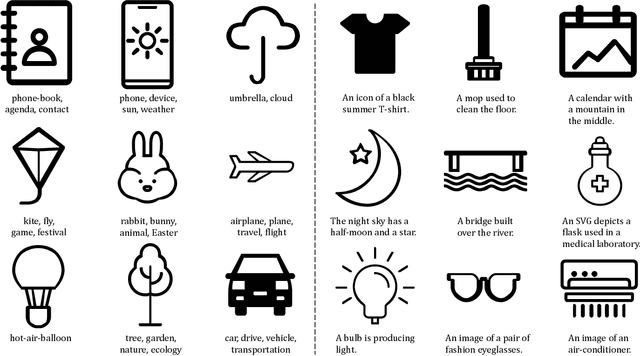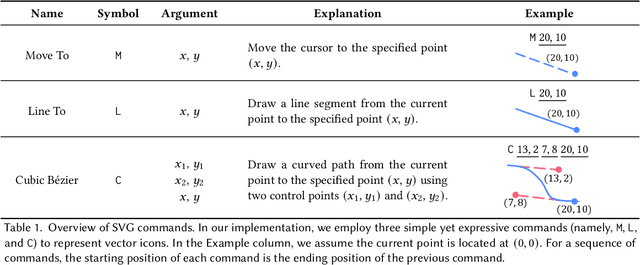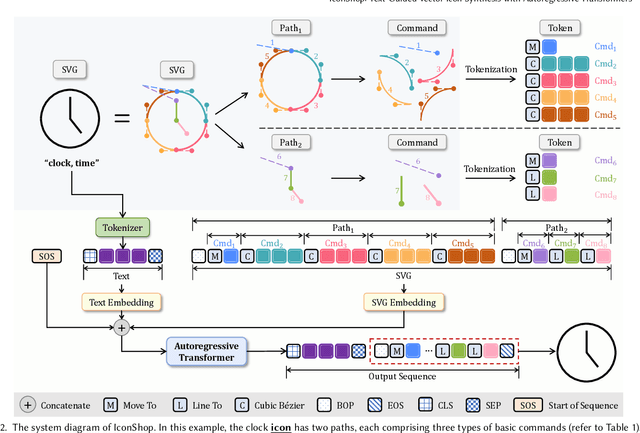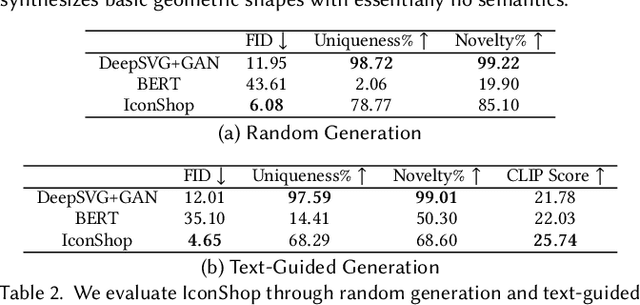IconShop: Text-Based Vector Icon Synthesis with Autoregressive Transformers
Paper and Code
Apr 27, 2023



Scalable Vector Graphics (SVG) is a prevalent vector image format with good support for interactivity and animation. Despite such appealing characteristics, it is generally challenging for users to create their own SVG content because of the long learning curve to comprehend SVG grammars or acquaint themselves with professional editing software. Recent progress in text-to-image generation has inspired researchers to explore image-based icon synthesis (i.e., text -> raster image -> vector image) via differential rendering and language-based icon synthesis (i.e., text -> vector image script) via the "zero-shot" capabilities of large language models. However, these methods may suffer from several limitations regarding generation quality, diversity, flexibility, and speed. In this paper, we introduce IconShop, a text-guided vector icon synthesis method using an autoregressive transformer. The key to success of our approach is to sequentialize and tokenize the SVG paths (and textual descriptions) into a uniquely decodable command sequence. With such a single sequence as input, we are able to fully exploit the sequence learning power of autoregressive transformers, while enabling various icon synthesis and manipulation tasks. Through standard training to predict the next token on a large-scale icon dataset accompanied by textural descriptions, the proposed IconShop consistently exhibits better icon synthesis performance than existing image-based and language-based methods both quantitatively (using the FID and CLIP score) and qualitatively (through visual inspection). Meanwhile, we observe a dramatic improvement in generation diversity, which is supported by objective measures (Uniqueness and Novelty). More importantly, we demonstrate the flexibility of IconShop with two novel icon manipulation tasks - text-guided icon infilling, and text-combined icon synthesis.
 Add to Chrome
Add to Chrome Add to Firefox
Add to Firefox Add to Edge
Add to Edge